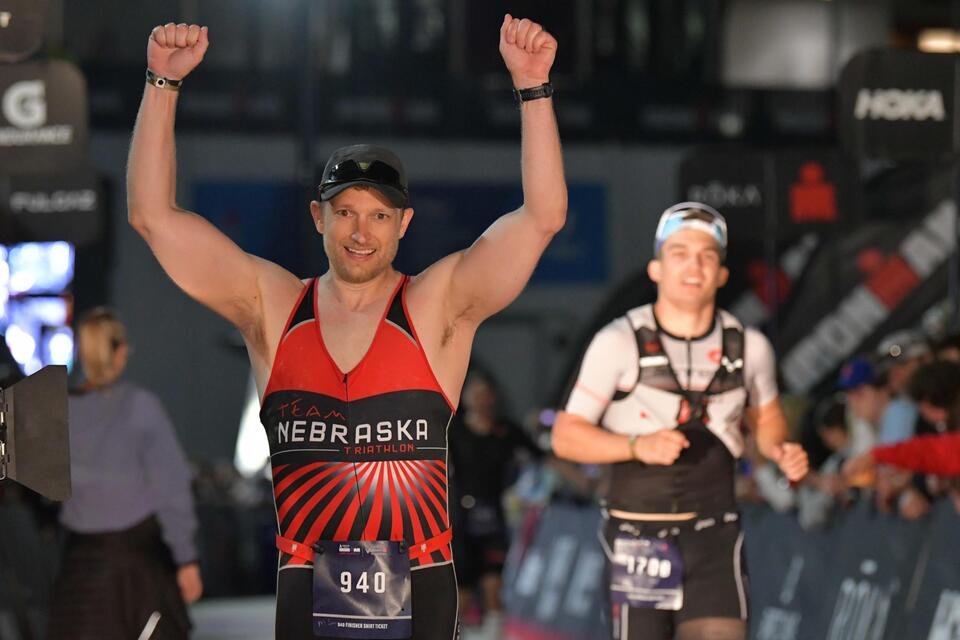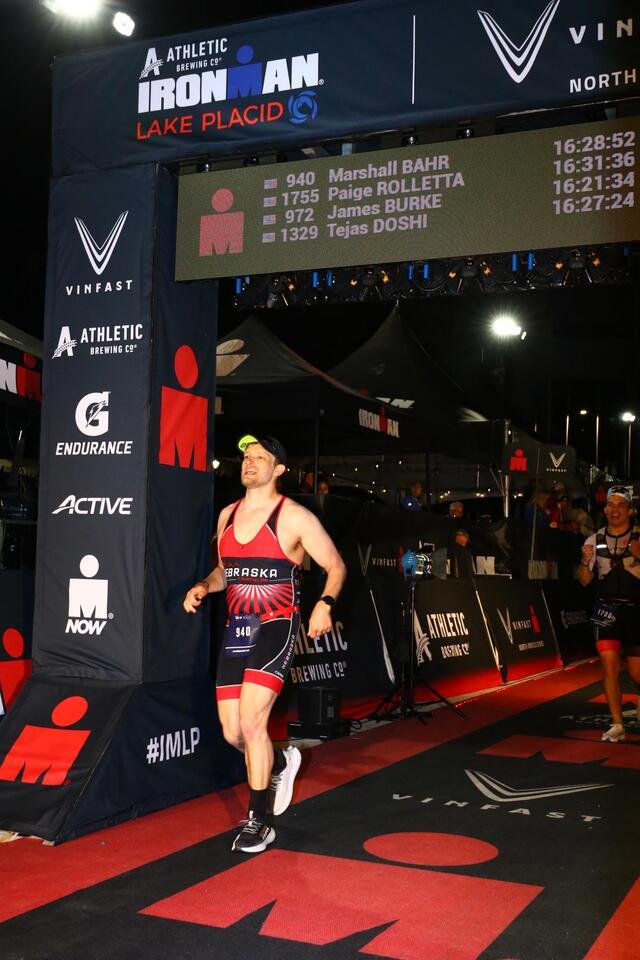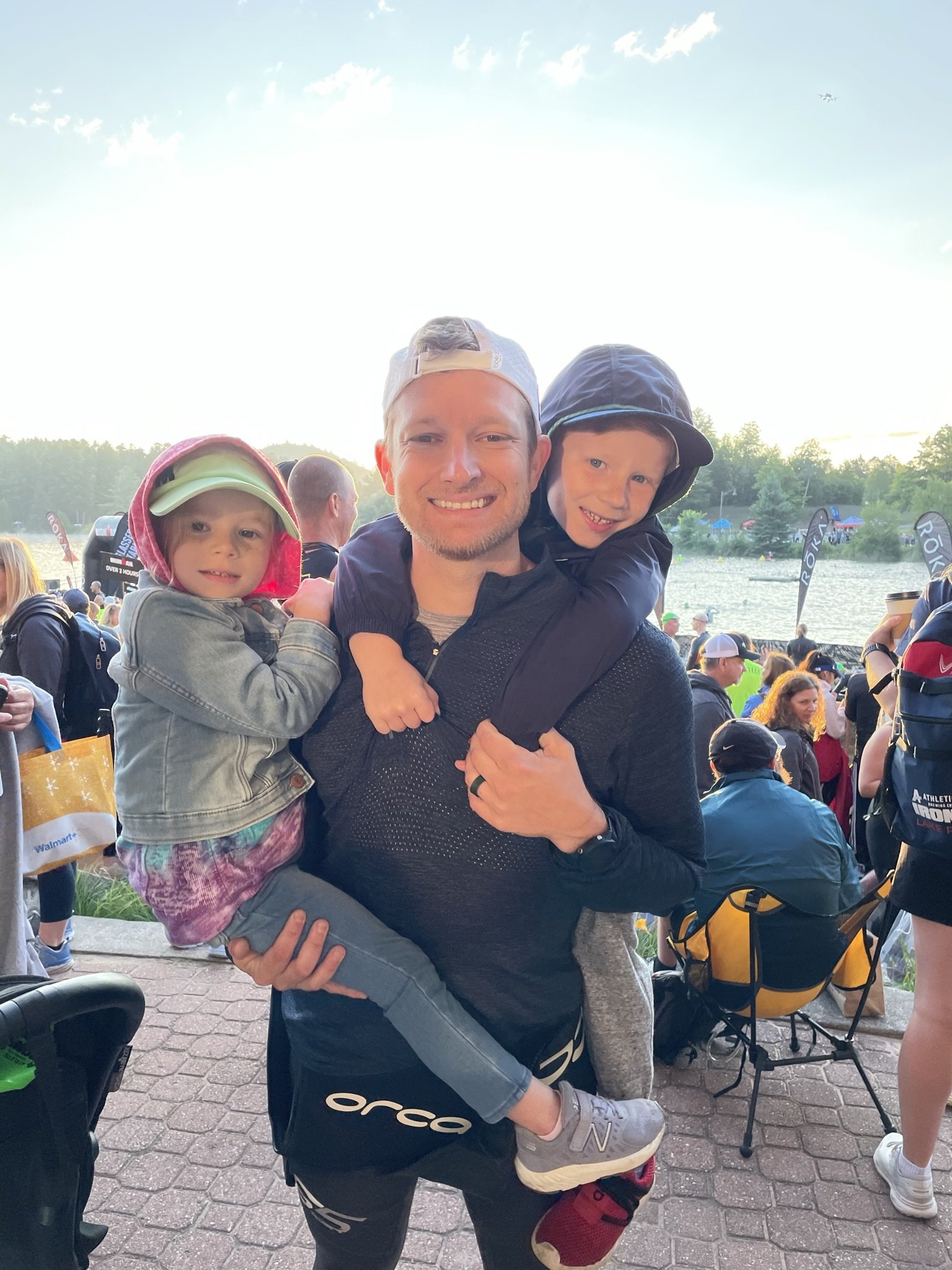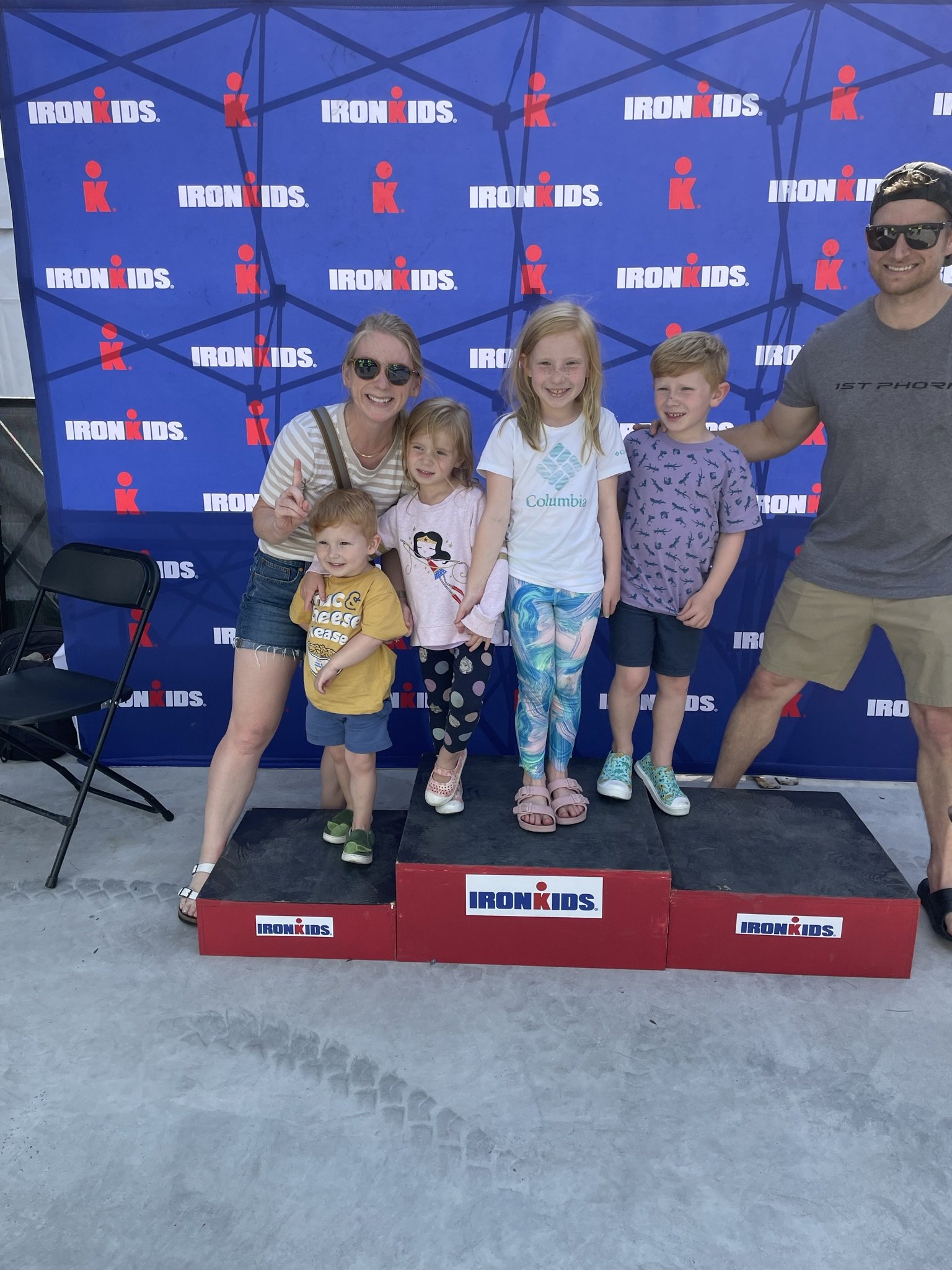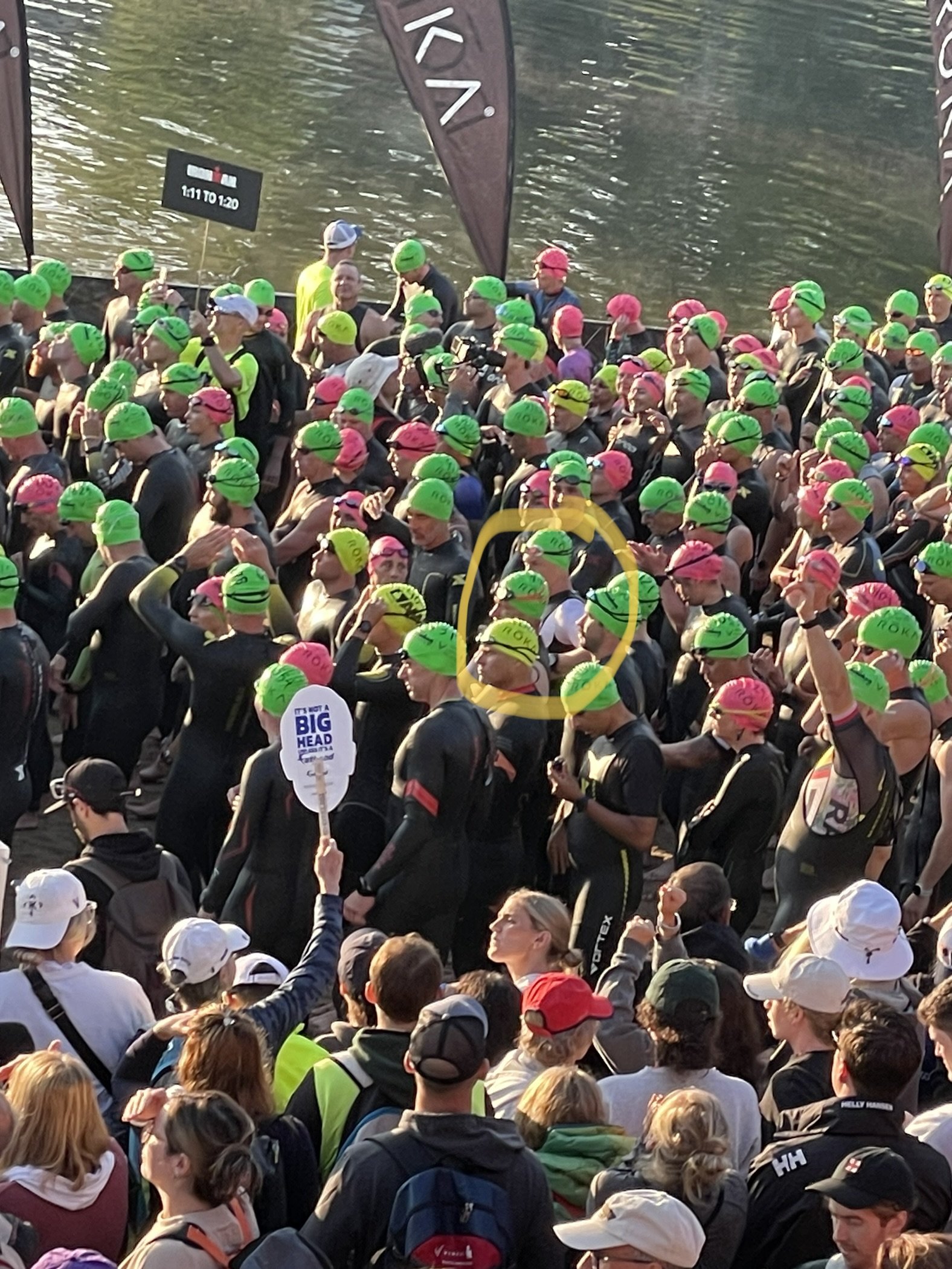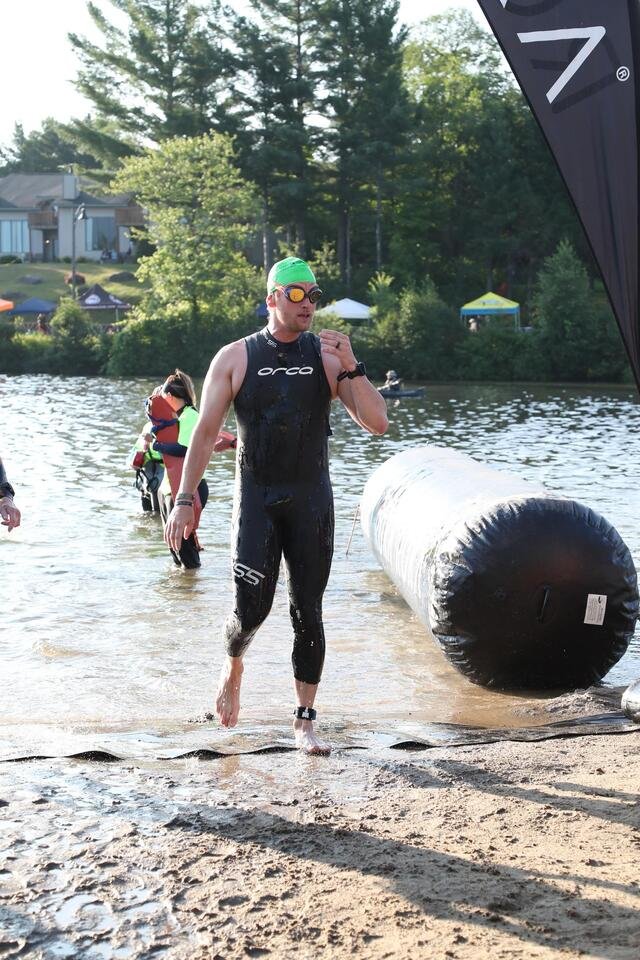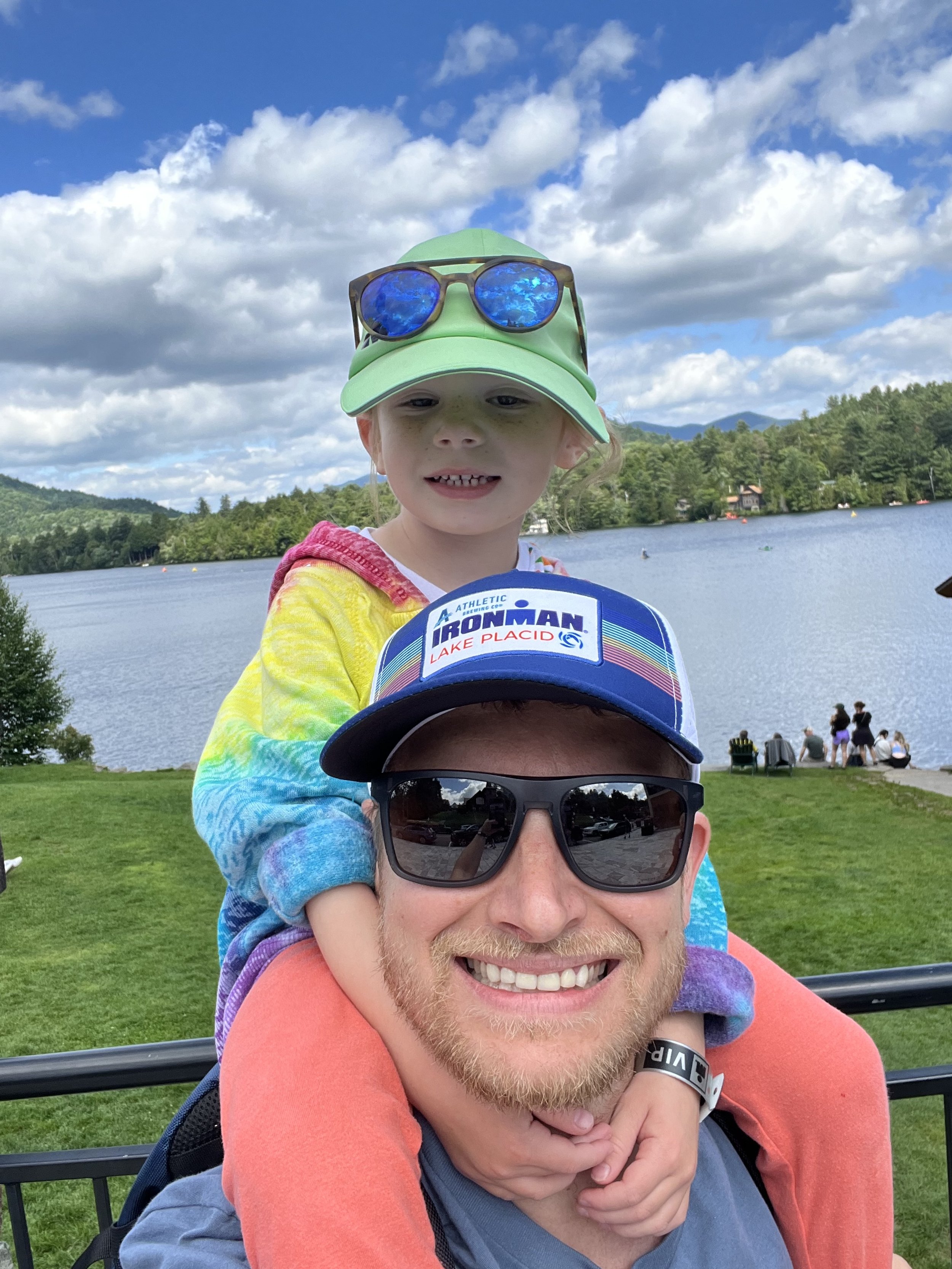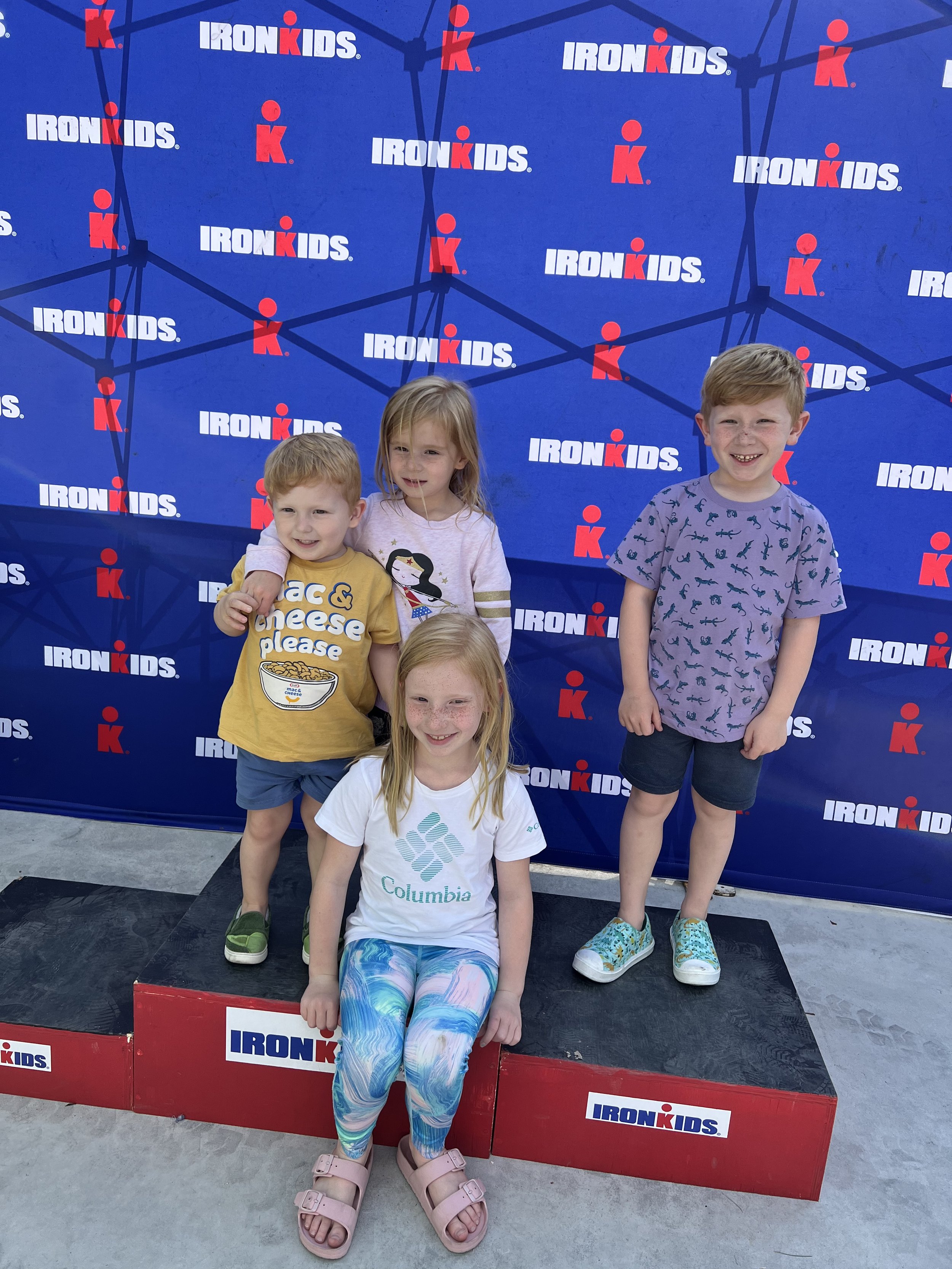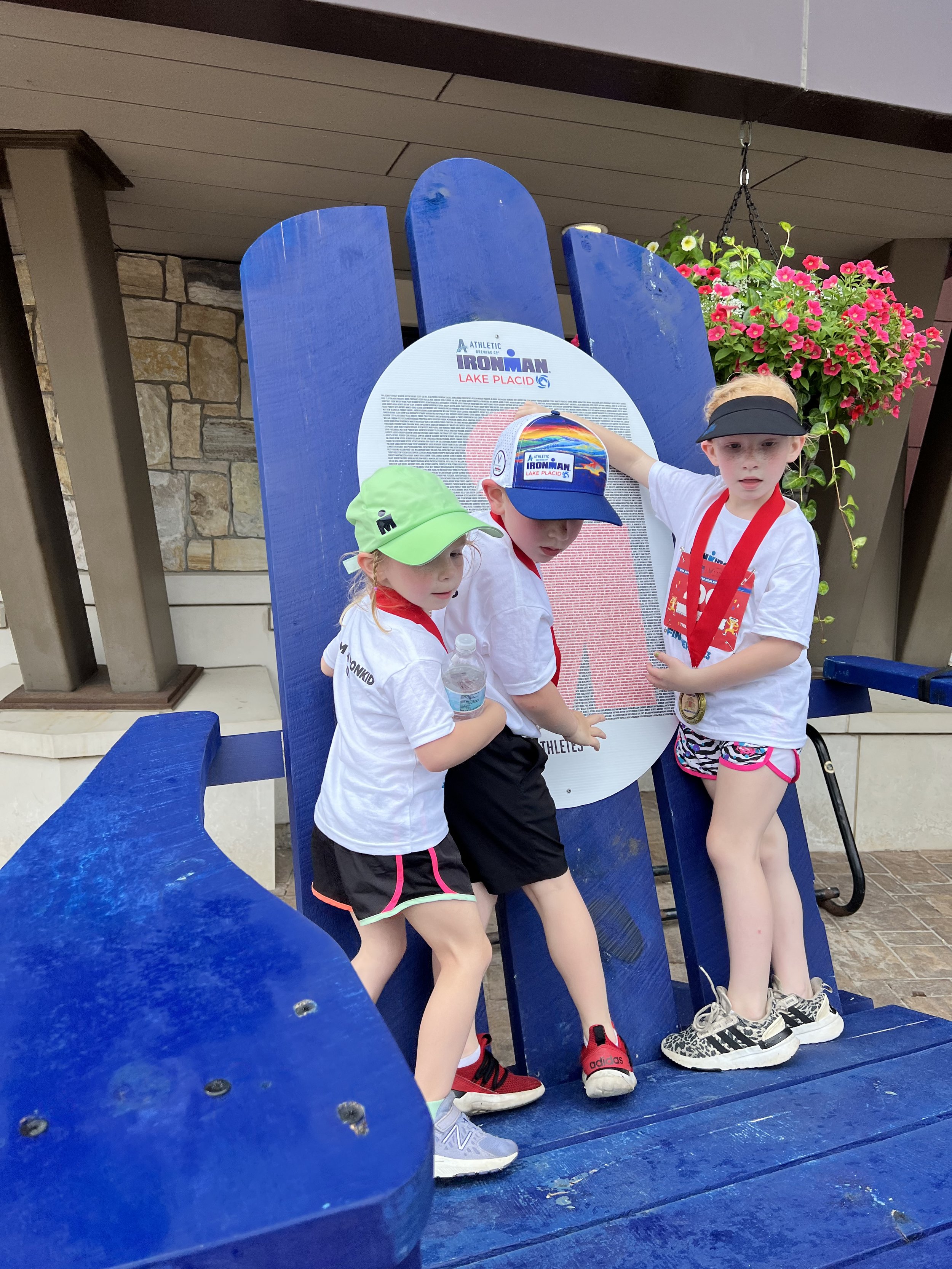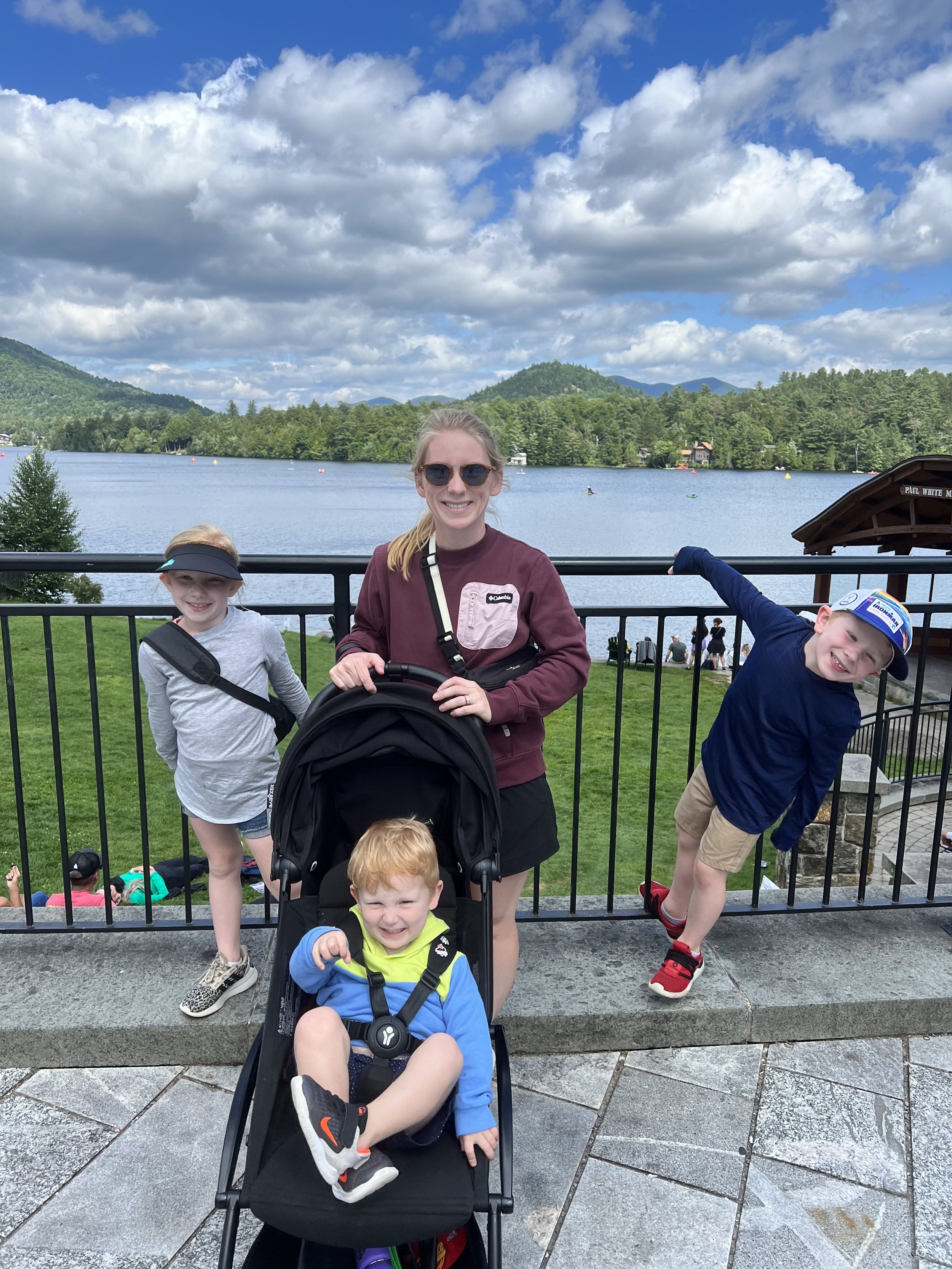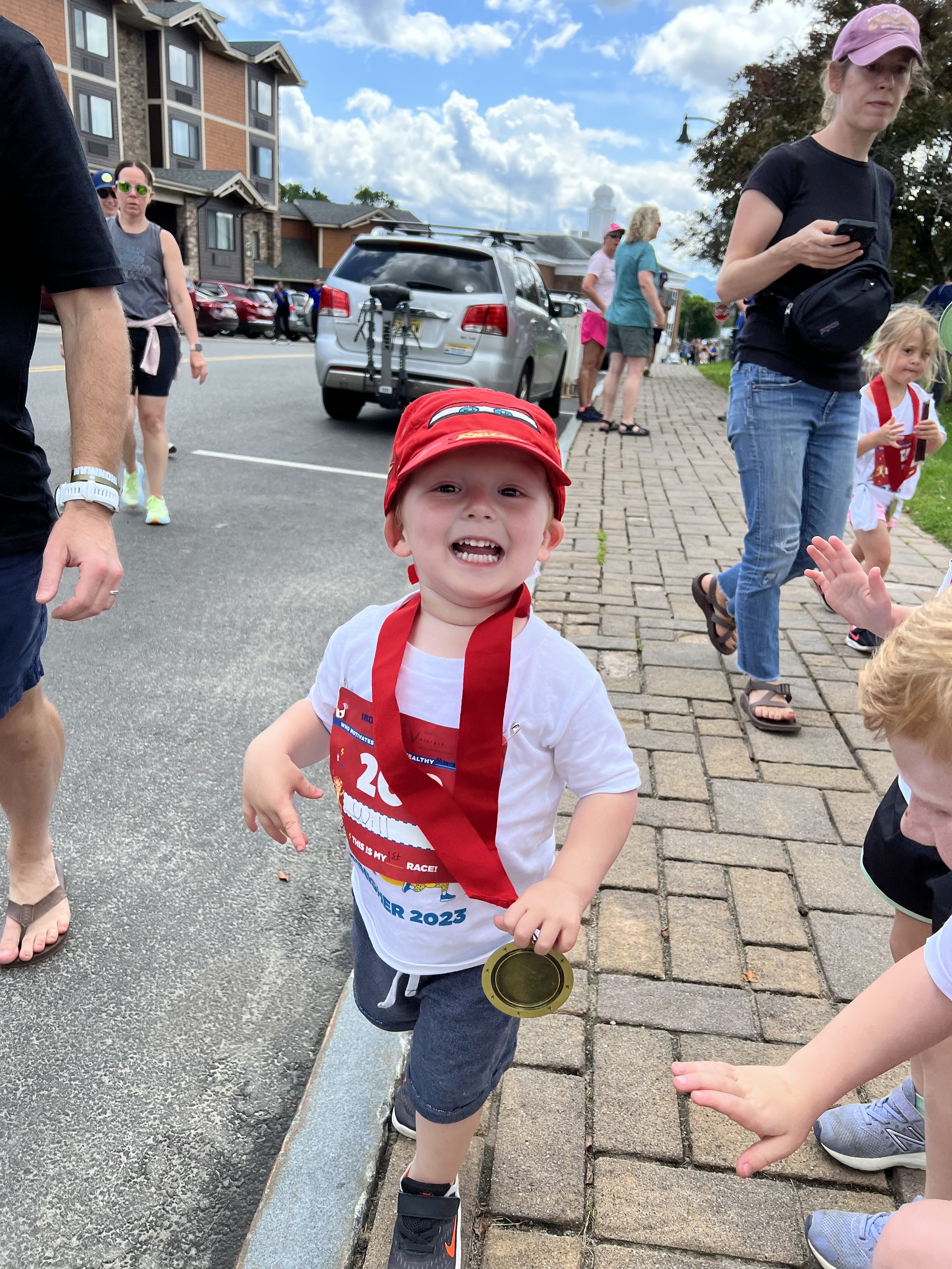2/11/24 Workout
In the realm of endurance sports, finding the right balance between intensity and duration is key to maximizing performance and avoiding burnout. Today, I embarked on a 2 hour and 30-minute cycling session, meticulously planned to keep my power output within the range of 123 to 165 watts. This session was designed to primarily engage in Zones 1 and 2 of my training zones, focusing on building endurance and aerobic base without overtaxing my system.
The Significance of Zones 1 and 2
Training in Zones 1 and 2 is crucial for any endurance athlete. These zones are characterized by low to moderate intensity efforts that allow for longer duration workouts. Specifically, Zone 1 is known as the Active Recovery zone, where the effort is very light, and you can comfortably hold a conversation. Moving slightly higher, Zone 2, or the Endurance zone, requires a bit more effort but still allows for full sentences to be spoken without gasping for breath.
The Plan
The goal for today's session was clear: maintain a steady power output between 123 to 165 watts throughout the 2 hours and 30 minutes on the bike. This power range was chosen to ensure that my body remains in the aerobic state, optimizing fat burning and building a strong cardiovascular foundation.
The Execution
Riding for such a duration requires not just physical preparation but mental readiness as well. I divided the session into three equal parts, each with a specific focus to keep things engaging:
The First Hour: Building the Base
Focused on getting into a comfortable rhythm, keeping my power output steady at the lower end of the targeted range. This was about warming up the muscles and preparing my cardiovascular system for the longer effort ahead.
The Second Hour: Sustaining Effort
Gradually increased my power output to hover around the midpoint of the target range. This segment tested my endurance, ensuring that I could maintain a consistent effort without any spikes in power that might push me out of the desired zones.
The Final 30 Minutes: Fine-Tuning Efficiency
Aimed to fine-tune my efficiency on the bike, focusing on maintaining a smooth pedal stroke and a consistent power output at the upper end of the target range. This was also a time to reflect on the session's progress and prepare for a smooth cooldown.
The Outcome
Today's bike session was a testament to the importance of zone-based training. By staying within the specified power range, I was able to complete the workout feeling strong and without any signs of overexertion. This approach not only enhances aerobic capacity but also contributes to overall endurance performance, making it a staple in my training regimen.
Key Takeaways
Consistency is Key: Maintaining a steady effort in the targeted zones ensures that the workout remains effective and sustainable.
Patience Pays Off: Building an aerobic base doesn't happen overnight. It requires patience and consistent effort over time.
Listen to Your Body: While it's important to follow the planned power output, being attuned to your body's signals is crucial. Adjusting the effort slightly to stay comfortable can make a significant difference in the long run.
Today's Dual Training Session 2/7/24
The day began with a 40-minute run, scheduled between the early hours of 11:14 and 12:30. The goal was to maintain a pace that fluctuated between 11:14 to 12:30 minutes per mile, targeting the aerobic thresholds within Zone 2 to Zone 3. This pace was deliberately chosen to enhance my aerobic capacity without overstepping into an anaerobic zone, which could potentially lead to undue fatigue or injury.
Running in these zones encourages the body to utilize fat as its primary energy source, improving endurance and efficiency. The discipline required to stay within these zones, despite the temptation to speed up, is a mental challenge in itself. It's a practice in patience and understanding the long-term benefits of building a strong aerobic base.
The Aquatic Challenge: Precision and Endurance
Following the run, the focus shifted to the pool for a swimming session that was as much about precision as it was about endurance. The session was structured into several segments, each with specific goals and intensities:
Warm-Up and Drills
The swim began with a warm-up of freestyle strokes (FS), covering 100 meters at a pace of 40 to 43 seconds per 100 meters, within Zone 2 to Zone 3. This was followed by drills aimed at refining technique, again at a pace of 40 to 43 seconds per 100 meters in the same zones. A brief rest period of 5 seconds between sets helped to maintain focus and prepare for the more intense segments to come.
Pull Sets
The pull sets introduced a slight increase in intensity, starting with 50 meters at a pace of 40 to 43 seconds per 100 meters in Zones 2 to 3, and then escalating to 50 meters at 36 to 38 seconds per 100 meters, reaching into Zone 4 to Zone 5a. These sets were designed to build upper body strength and improve water feel, with short rests in between to allow for quick recovery.
Main Sets
The main set of the swim was a series of freestyle sprints, increasing in intensity and decreasing in distance:
200 meters at 38 to 39 seconds per 100 meters in Zone 4, repeated five times with 10-second rests, focused on sustaining a high-intensity effort over a moderate distance.
100 meters at 36 to 38 seconds per 100 meters in Zones 4 to 5a, repeated eight times with 10-second rests, pushing the limits of speed endurance.
50 meters at 34 to 36 seconds per 100 meters in Zone 5b, repeated twice with 15-second rests, aimed at maximum effort sprints to build explosive power and speed.
Warm Down
The session concluded with a warm-down segment, returning to a pace of 40 to 43 seconds per 100 meters for 50 meters in Zone 2 to Zone 3, followed by a choice stroke for another 100 meters at the same pace. This period allowed my muscles to relax and recover, minimizing post-exercise soreness and facilitating a faster recovery.
Reflecting on Today's Training
Today's dual-session training was a testament to the importance of balanced and strategic exercise planning. By meticulously adjusting the intensity and duration of each segment, I could target specific energy systems and muscle groups, enhancing both my aerobic and anaerobic capacities. The discipline to adhere to the prescribed zones, despite the varying demands of running and swimming, has been crucial in my overall development as an athlete.
1/27/24 Workout
Today was all about embracing the long, easy run, primarily in Zones 1 and 2 (Z1-Z2).
For those new to the concept, Z1-Z2 refers to heart rate zones. Zone 1 is super easy – think of it as a warm-up or cool-down pace, while Zone 2 is still quite comfortable, allowing for full sentences during a conversation. Today’s goal was to maintain a pace of about 11:46 to 13:20 minutes per mile over a span of one hour and five minutes. I was able to cover 7 miles with an average heart rate of 139 beats per minute (BPM). It was a challenge in discipline more than exertion.
Now, let's talk about why this kind of workout is crucial for triathletes or any endurance athletes. It might seem counterintuitive to go slow to get fast, but there's solid science behind it. Long runs at a lower intensity train our bodies to be more efficient at burning fat for fuel, which is vital for endurance sports. Additionally, these runs improve cardiovascular fitness while reducing the risk of injury that comes with constant high-intensity training.
But don't just take my word for it. A study published in the "Journal of Sports Science & Medicine" highlights the importance of low-intensity training for endurance athletes. The researchers found that athletes who incorporated more low-intensity training improved their endurance performance significantly. This improvement is attributed to enhanced mitochondrial efficiency – basically, our cells get better at producing energy.
So, today wasn’t just about clocking miles; it was about building a foundation. These Z1-Z2 runs are teaching my body to go further and faster by becoming more efficient. It’s about playing the long game.
Remember, whether you're training for a triathlon or just looking to improve your endurance, don't underestimate the power of a long, easy run. It's not just a break for your body; it's an essential part of becoming a stronger, faster, and more resilient athlete.
Stay tuned for more updates as I continue my triathlon training journey. Until next time, keep running your own race at your pace!
1/25/24 routine
Today's workout routine was centered around an aerobic endurance bike ride, structured to enhance my cardiovascular capacity and endurance. Here's how the session unfolded:
Warm-Up:
Started with a 10-minute ride in Zone 2 (Z2), which set a moderate pace to gradually increase my heart rate and prepare my muscles for the more intense effort ahead.
Followed this with 5 sets of 30 seconds in upper Zone 2, pushing slightly harder to raise my effort levels, alternating with 30 seconds in low Zone 2 for a brief recovery and to maintain a steady heart rate.
Main Set:
The first intense segment was 9 minutes in upper Zone 2, where I maintained a challenging but sustainable pace. This was followed by a 60-second recovery period in low Zone 2, allowing me to catch my breath and prepare for the next round.
Next, I pushed for 12 minutes in upper Zone 2, increasing the duration to challenge my endurance further. After this, another 60-second recovery in low Zone 2 helped me to reset.
The final push was a continuous 15-minute effort in upper Zone 2, focusing on maintaining a strong and steady pace to maximize aerobic capacity.
Warm-Down:
I concluded the session with a 5-minute cooldown in low Zone 2, easing the pace to gradually bring my heart rate down and to ensure proper recovery after the intense workout.
This structured cycling workout, with its varied intensities and durations, was key in building my aerobic endurance - an essential component for my overall training goals.
Training Diary: 1/24/24
Today's workout was an eclectic blend of running and swimming, each with its own set of goals and intensity levels.
Easy/Steady Run in Zone 2 (Z2) for 40 Minutes
The day began with an easy and steady run for 40 minutes in Zone 2. This zone is all about building endurance and aerobic capacity, crucial for the long distances in Ironman races. The pace was comfortable, allowing me to focus on my breathing and form. It's the kind of run that energizes rather than exhausts, preparing my body for the more intense swimming session ahead.
Swimming Routine
Warm-Up:
The swimming session started with a warm-up designed to loosen up the muscles and get the heart rate up gradually:
1 set of 100 meters Freestyle (FS) in Zone 2, focusing on steady and relaxed strokes.
Followed by 100 meters of Drill in Zone 2, which helped in fine-tuning my technique.
A brief 5 seconds rest was just enough to reset before moving on.
Main Set:
The main set was where the intensity really kicked in:
3 sets of 200 meters FS in Zone 3 (Z3), with 10 seconds rest between each set. This was moderately hard, pushing my pace while maintaining efficiency in my strokes.
Up next were 5 sets of 100 meters FS in Zone 4 (Z4), each followed by a 10 seconds rest. These were hard intervals, designed to build my speed and anaerobic threshold.
The peak of the session was 8 sets of 50 meters FS in Zone 5 (Z5), with 15 seconds rest between each. This was about high-intensity bursts, challenging my muscles and cardiovascular system to the max.
Warm-Down:
To cool down:
2 sets of 50 meters FS in Zone 2, followed by 50 meters Backstroke in Zone 2. This was crucial for easing the muscles out of the high-intensity work.
The session wrapped up with 100 meters of Choice stroke in Zone 2, allowing some freedom and relaxation to conclude the workout.
Reflections
Today’s training was a perfect mix of endurance and intensity, each part complementing the other. The run set a great tone for the day, while the swim pushed my limits and expanded my capabilities. Days like these are essential in building the diverse range of skills and stamina needed for the Ironman. The journey is tough, no doubt, but each workout brings me closer to that ultimate goal.
My First Ironman Journey: Triumphs and Trials at Iron Man Lake Placid
The Iron Man Lake Placid race, renowned for its breathtaking landscape and challenging course, stands as a pinnacle achievement in the world of endurance sports. Nestled in the heart of the Adirondacks, Lake Placid is not just a picturesque town but a historic site, having hosted two Winter Olympics. Its Iron Man race, held on July 23, 2023, continued this legacy of athletic excellence, drawing athletes from around the globe to test their limits. As I write this post, months after the race and at the culmination of my race season, I find myself reflecting on a journey that was as transformative as it was challenging.
My decision to write about this experience was delayed, fueled by a desire to first absorb and understand the full spectrum of what I had undergone. It's one thing to participate in such a demanding event; it's quite another to distill its essence into words. Now, with the season behind me and the emotions and lessons processed, I am ready to share my story.
My journey to Lake Placid was an unconventional one. Unlike many who ease into the world of triathlons, starting with shorter distances and gradually building up, I leapt directly into the deep end. Choosing a full Ironman race as my first triathlon experience might have seemed audacious, but it felt right for me. The decision was driven by a mix of naivety and a deep-seated belief in challenging my limits. Lake Placid, known for its hilly course, presented an even greater challenge, and I was drawn to it, eager to test my mettle against one of the most demanding courses in the Ironman circuit.
However, this decision came with its share of challenges. My training, spanning about six months, was self-devised. I bypassed traditional training plans, opting instead for a regimen of high-intensity workouts crafted on intuition rather than structured guidance. This approach, while reflective of my general attitude towards challenges, was perhaps my first misstep. Training for an Ironman is a delicate balance of endurance, strength, and technique, something I learned the hard way. My inconsistent training schedule, coupled with a lack of focus on key heart rate zones, was less than ideal. Fortunately, my body was resilient, sparing me from overuse injuries despite the rigorous demands I placed on it.
The journey to Lake Placid from Ohio was as much a part of the Iron Man experience as the race itself. My family and I embarked on this adventure in our trusty minivan, a vehicle not typically associated with athletic escapades but one that symbolized the essence of our family: adventurous, unpretentious, and always ready for a challenge. The van was crammed with my wife, our four children, our enthusiastic dog, and amidst all the chaos, my disassembled bike, ingeniously squeezed into the aisle. This logistical puzzle was a prelude to the many challenges I would face in the race. It was during this cramped journey that I realized the importance of proper equipment, a lesson that culminated in the immediate purchase of a trailer hitch post-race - a simple yet significant improvement for future endeavors.
Our accommodation was a beautiful secluded cabin, located about 45 minutes from Lake Placid. This choice was a blend of strategic isolation and scenic tranquility, offering a peaceful retreat from the pre-race nerves. The cabin, nestled in the wilderness, became a haven for family bonding, with hiking adventures and moments of serenity. However, its distance from the race start posed a logistical challenge on race day, adding to the already high stress levels.
The training regimen I followed in the months leading up to the race was a self-devised approach, prioritizing intensity over structured endurance building. This method, while reflective of my go-getter attitude, overlooked key aspects of Ironman preparation. My training was peppered with inconsistency, not adhering to a set schedule and lacking focus on crucial heart rate zones. The high-intensity workouts, although improving my physical strength, did not fully prepare me for the endurance demands of a full Ironman. This approach was a gamble that, while it didn't result in injury, certainly set the stage for the humbling experiences I encountered during the race.
Lake Placid itself, is a city that captures the heart with its natural beauty and Olympic legacy. As my family and I explored its charming streets and scenic surroundings, the city's allure became a soothing backdrop to the pre-race jitters. The town, steeped in athletic history, resonated with a spirit of endurance and achievement, echoing the essence of the Iron Man race it was about to host.
Our days leading up to the race were filled with explorations and discoveries. The serene Mirror Lake, soon to be the battleground for my swimming challenge, was a tranquil haven, its calm waters reflecting the surrounding mountains and the clear blue sky. These moments of family fun amidst the natural splendor of Lake Placid provided a wonderful distraction.
Downtown Lake Placid, with its quaint shops and local eateries, offered a delightful escape from the rigors of race preparation. We wandered through the streets, soaking in the vibrant atmosphere and the friendly chatter of locals and visitors alike. Each store we entered, each meal we shared, was an opportunity to connect with the community, to feel a part of something bigger than the race itself.
These explorations around Lake Placid were not just leisurely diversions; they were integral to my race experience. They allowed me to bond with my family, to appreciate the beauty of the setting, and to draw inspiration from the city's Olympic spirit. As I immersed myself in the charm of Lake Placid, I found a sense of calm and confidence.
The Iron Man Race Expo in Lake Placid was amazing. As I stepped into the expo, the first thing that struck me was the sheer scale of it all. Rows upon rows of vendors, the latest in triathlon gear and nutrition, and a buzzing crowd of athletes and spectators created an electrifying atmosphere. The realization that I was part of this massive community of athletes, all united by a common goal, was both humbling and exhilarating.
Interacting with other competitors was an experience in itself. I found myself amidst seasoned triathletes and first-timers, each with stories that were both inspiring and instructive. Conversations flowed easily, bridging the gap between strangers. Veterans of the sport shared tips and experiences, while newcomers like myself listened eagerly, absorbing every piece of advice. This camaraderie was a testament to the inclusive spirit of the Ironman community. It was comforting to know that despite the individual nature of the race, there was a collective spirit that bound us all.
However, amidst this vibrant atmosphere, I encountered my first set of challenges. In my pre-race naivety, I had overlooked a crucial aspect of race preparation - the gear bag logistics. It was only after arriving at the expo that I realized the necessity of dropping off race day gear bags at the starting area the day before. This oversight meant an unplanned 45-minute drive back to our cabin, a stressful addition to the already packed schedule.
Additionally, I hadn't considered the possibility of inclement weather affecting my gear. A brief storm on race day resulted in my running gear bag getting soaked. My running shoes and socks, which I had meticulously chosen for comfort and performance, were now drenched. This unforeseen mishap was a stark reminder of the unpredictable nature of outdoor endurance events and the importance of meticulous planning and preparation.
Then there was the Iron Kids race event, a charming precursor to the main Iron Man race. It was a wonderful experience for my kids. As a parent, seeing my children participate in the event brought a unique joy and pride. This event was not just about introducing kids to the world of triathlon; it was about instilling values of health, fitness, and the spirit of friendly competition at a young age.
Each of my children took part in races tailored to their ages. My three oldest children faced a one-mile run. The youngest, our toddler, participated in the adorable "diaper dash," a 23-yard sprint that was as much a crowd-pleaser as it was a milestone for our little one. Watching them participate with such enthusiasm, mirroring the serious athletes in their own youthful way, was a sight to behold.
The race setup for the Iron Kids event was meticulously organized, ensuring safety and fun. The courses were clearly marked, and the distances were appropriate for the different age groups. Most importantly, the atmosphere was electric with encouragement and support. Parents and spectators cheered every child, making each little athlete feel like a star. The organizers did an excellent job of creating an environment that was competitive yet nurturing, ensuring that the children's first brush with racing was a positive and memorable experience.
Receiving their medals at the finish line, my children beamed with a sense of accomplishment. The medals were not just tokens of participation; they symbolized effort, perseverance, and the joy of crossing a finish line.
Finally, as race day dawned I faced a mix of anticipation and nervous energy. The excitement of the event, coupled with the natural anxiety of facing my first triathlon, meant sleep was elusive the night before. Lying awake, I pondered the challenge ahead, the journey that had brought me here, and the daunting task of swimming, biking, and running through one of the most rigorous courses in the Ironman series.
The early morning start added to the surreal quality of the day. Waking up around 3:30 AM, we embarked on the 45-minute drive to the race start. In these quiet, dark hours, my mind raced with thoughts and strategies, but also a fundamental question – was I truly prepared?
In what would turn out to be a significant misstep, I altered my race day nutrition plan in the eleventh hour. About 30 minutes before the swim start, I decided to consume a peanut butter and jelly sandwich, a deviation from my usual pre-race meal. Little did I know, this decision would have repercussions later in the race.
The swim at Mirror Lake was set against a backdrop of serene beauty. The lake, known for its calm and clear waters, was a sight to behold in the early morning light. As the race commenced, the once peaceful lake transformed into a flurry of activity. Swimmers of varying speeds entered the water in phases, creating a dynamic and challenging environment.
My inexperience in open water swimming became apparent almost immediately. It was my first time donning a wetsuit, my first time in open water, and my first time swimming amidst a large group of athletes. The calm lake quickly turned into a tumultuous sea of arms and legs, an experience far removed from the solitary laps in a pool.
The swim was a test of endurance and mental fortitude. The course, consisting of two loops in the lake, required swimmers to briefly exit the water after the first loop before diving back in. The first loop went surprisingly well, given my lack of open water experience. However, as I plunged back into the lake for the second loop, things took a turn.
About 50 meters into the final lap, a wave of nausea hit me. The abrupt transition from vertical to horizontal movement, compounded by the earlier nutrition mistake, wreaked havoc on my system. Vomiting while treading water amidst hundreds of other swimmers was a low point, both physically and mentally. It was a battle to stay afloat and focused while my body rebelled against the situation.
In that moment, I contemplated seeking help from a nearby lifeguard, but my competitive spirit wouldn't allow it. Quitting was not an option. Despite the setback, I gathered my resolve and continued. After a grueling 10-15 minutes, the nausea subsided enough for me to complete the swim.
Emerging from Mirror Lake, I was physically drained but mentally victorious. I had faced and overcome my first major hurdle of the race. The swim portion of the Ironman had tested me in ways I hadn't anticipated, but it also taught me a crucial lesson about endurance sports – it's as much a mental game as it is a physical one.
Emerging from the swim, heart still racing and limbs heavy with exertion, I faced the first transition of the race. The transition from swim to bike, a segment I had not given much thought to in my training, presented unexpected challenges. The path from the lake to the bike racks was longer than anticipated, almost a quarter mile, which added to the fatigue. In the changing tent, I quickly switched into my biking gear, the adrenaline of the race mixing with the urgency of the transition.
Once on the bike, the true essence of the course revealed itself. The 112-mile bike route, renowned for its scenic vistas and demanding terrain, was both awe-inspiring and daunting. The course wound through the picturesque Adirondack Mountains, offering stunning views that were a balm to the tired mind but also a reminder of the grueling hills that lay ahead.
My personal struggles on the bike course were numerous. Despite my overall fitness, I quickly realized that my training had been inadequate for the challenges of a hilly course. The lack of focused hill training became apparent as I struggled with the climbs, the weight of my aluminum-framed road bike not helping matters. I had naively believed that determination and physical strength would compensate for specific training and the right equipment – a misconception that was being rectified with each uphill stretch.
The famed Keene descent on the course was a moment of respite and thrill. Reaching speeds of 45 miles per hour, the descent was a rush of exhilaration, but it also marked the start of the more challenging part of the course. My lack of pacing strategy began to show. Caught up in the race day excitement, I had expended too much energy too soon, a rookie mistake that would cost me dearly in the later stages.
As the miles ticked by, my legs began to feel the strain. What started as minor cramps in my quads around the 75-mile mark escalated to full-blown muscle spasms, rendering every pedal stroke a battle against pain. I hadn't anticipated the toll that sustained climbing and riding would take on my body. The frequent stops at aid stations for stretching became necessary, slowing my pace but providing much-needed relief.
Finishing the bike segment was an achievement laced with relief and exhaustion. My legs were spent, and the realization that a full marathon still awaited me was daunting. The bike course had been a humbling teacher. It taught me the importance of specific training, the right gear, and the need for a strategic approach to such a demanding race. As I transitioned to the run, I carried with me not just the physical weariness from the bike course but also valuable lessons for the future.
The transition from the bike to the run brought a new set of challenges. After completing the bike segment, I was greeted by the disheartening sight of my soaked running gear. The brief storm earlier in the day had drenched my shoes and socks, a complication I hadn't foreseen.
As I set out on the marathon run, my spirits were dampened, much like my gear. The 26.2 miles ahead loomed large, a daunting task given the state of my legs, already taxed from the swim and bike segments. The start of the run course, marked by a descent, was especially brutal on my quads, which screamed in protest with each step. The pain was immediate and intense, a clear signal that the marathon would be as much a mental battle as a physical one.
The run quickly evolved into a test of endurance and willpower. Barely a mile in, my quads locked up, refusing to bend, turning each stride into a jarring impact. The pain was unlike anything I had experienced, and for a moment, I feared the worst - that my muscles had given out entirely. However, quitting was never an option. Drawing on my military training and driven by sheer determination, I shifted to a road march pace, a strategy that offered a compromise between speed and sustainability.
Adopting this marching rhythm, I managed to maintain a pace of around 13 minutes per mile. It wasn't fast, but it was steady, and in a race like this, consistency is key. The remote stretches of the course were eerily quiet, leaving me alone with my thoughts and the relentless pain in my legs. These moments were a true test of character, pushing me to dig deep and find reserves of strength.
Despite the physical agony, there was a sense of camaraderie on the course. Fellow athletes, volunteers, and spectators provided much-needed encouragement, their cheers and support a lifeline in the darker moments. This communal spirit, so inherent to the Ironman experience, was a constant source of motivation.
The final miles of the marathon were a blur of pain, fatigue, and determination. With each step towards the finish line, the cheers grew louder, the energy of the crowd infusing me with a final burst of strength. Crossing the finish line was an experience that transcended physical exhaustion and tapped into a deep well of emotion. After enduring hours of relentless physical and mental challenges, the sight of the finish line was both surreal and overwhelmingly gratifying. The crowd's cheers, the bright lights, and the announcer's voice proclaiming each finisher's arrival created an atmosphere charged with excitement and accomplishment.
As I approached the end, every step was a mix of agony and ecstasy. My legs, pushed beyond their limits, barely managed a trot, but I remained excited. The pain that racked my body paled in comparison to the overwhelming sense of achievement. Completing an Ironman, especially under such trying circumstances, was a testament to my resilience and capacity to endure.
However, the physical toll of the race quickly became apparent. Shortly after crossing the finish line, I experienced a post-race collapse, likely due to dehydration and electrolyte imbalance. The world spun, and I found myself grappling with lightheadedness and an overwhelming sense of fatigue. It was a scary moment, not just for me but for my family, who had been my steadfast support throughout this journey. Their concern was evident as they gathered around me, their faces etched with worry.
Thankfully, the collapse was brief. After some rest and medical attention, I managed to recover enough to rejoin my family. The joy of reunion was tinged with relief and exhaustion. My children's faces lit up with pride and happiness, a sight that revitalized my weary soul. The support of my family, their unwavering belief in me, had been a crucial pillar of strength throughout the race, and seeing them at the finish line was the perfect culmination of this arduous journey.
The aftermath of the race was a time for reflection and recovery. The physical pain in my legs persisted, rendering me unable to walk properly for days. We spent the following day at the cabin, a much-needed respite for my battered body and a chance to relive the race's highlights with my family. It took about two weeks for the pain to fully subside, a period during which I not only recuperated physically but also processed the entire experience mentally.
Reflecting on my journey, I find that the race was much more than a test of physical endurance; it was a profound learning experience, offering insights that extend well beyond the realm of athletic competition. Each stage of the race, each challenge encountered, brought with it valuable lessons that have reshaped my approach not only to triathlons but also to life's myriad challenges.
One of the key takeaways from this race was the undeniable importance of proper training. My self-devised, high-intensity training regimen, while it kept me in good general shape, did not adequately prepare me for the specific demands of an Ironman race. The lack of structured training, particularly in crucial areas such as endurance, pacing, and heart rate zone management, was a significant oversight. This experience underscored the need for a more methodical and disciplined approach to training, one that aligns with the unique requirements of the event.
Nutrition, I learned, plays a pivotal role in performance, especially in endurance sports. The decision to alter my race day nutrition at the last minute was a critical error, one that significantly impacted my swim. This incident highlighted the importance of not only planning a nutrition strategy in advance but also rigorously testing it during training to ensure it suits one's body and the demands of the race. Understanding and respecting the nutritional needs of my body under such extreme conditions is a lesson I will carry forward.
The race also emphasized the importance of the right gear. From the complications of transporting my bike in a cramped minivan to the challenges posed by my less-than-ideal bike choice and the soaked running gear, each instance was a lesson in the significance of appropriate, reliable equipment. Investing in a triathlon-specific bike, considering gear logistics, and preparing for all weather conditions are aspects I eventually paid more attention to in my future races.
Additionally, this race taught me the value of adaptability and mental resilience. Whether it was dealing with unexpected physical discomfort, weather-related issues, or equipment challenges, the ability to stay mentally focused and adaptable was crucial. The race reinforced that mental toughness is as important as physical strength in overcoming the hurdles of such a demanding event.
Lastly, this race reaffirmed the importance of a strong support system. I realize that none of this would have been possible without the unwavering support and incredible strength of my wife. She was the unsung hero of this adventure, her role pivotal yet often understated amidst the spectacle of the race.
Throughout the months of rigorous training, her support was the bedrock upon which my preparation was built. She took on the task of managing our household, often single-handedly, while I was consumed with long training sessions. Her understanding and encouragement during those endless hours of swimming, cycling, and running were invaluable.
But it was on race day that her remarkable resilience and capability truly shined. In a small town swarming with spectators and athletes, she navigated the chaos with the calmness of a seasoned pro. Managing four young children in such an environment is no small feat. It requires a blend of patience, organization, and sheer determination – qualities that she possesses in abundance.
Her efforts to ensure that our children were not just present, but actively involved in the event, speaks volumes of her commitment to our family's shared experiences. She orchestrated their movements through the crowded streets of Lake Placid, ensuring they were at each transition point to offer their cheers and smiles – boosts of encouragement that were my lifeline during the toughest moments of the race.
The work and effort she put into mobilizing our little crew around the Adirondacks was nothing short of miraculous. Her day was, in many ways, as demanding as mine. Juggling the needs of our children, keeping track of my progress, and navigating the logistics of the race venue required a level of endurance and mental toughness that parallels the demands of Ironman racing.
In recognizing my own accomplishment, it's crucial to acknowledge that it was her unwavering support that made it all possible. Her sacrifices, often silent and unnoticed, were the foundation upon which my dream was realized. This journey, while embarked upon individually, was a collective effort, with her role being as central as mine.
So, as I share my experiences and the lessons learned, I want to give a heartfelt shoutout to my incredible wife. Her love and untiring support were the unsung yet vital elements of my Ironman journey. This achievement is as much hers as it is mine, and I am profoundly grateful for everything she has done.
Looking ahead, the journey is far from over. This initial race was just a stepping stone to my next races. My next endeavor, I took on Iron Man Chattanooga. Armed with the lessons learned from Lake Placid, I approached this race with a renewed sense of purpose and preparation, which paid off in a very positive way.
To my readers and aspiring triathletes, I offer this encouragement: the path to completing an Ironman is demanding, but it is within your reach. Embrace the journey with all its highs and lows. Train diligently, respect your body's needs, and equip yourself properly. Most importantly, believe in your ability to endure and overcome. Remember, every champion was once a contender that refused to give up.
Stay tuned for my next post, where I will delve into my experience at the Iron Man Chattanooga. Together, let's continue to push boundaries and redefine what's possible.
Mock Half Iron Man
Yesterday, I took part in a half Ironman practice/trial run event, and I couldn't be happier with my performance. I've been training rigorously over the past few months, and it's incredibly rewarding to see my hard work paying off.
During the event, I swam 1.2 miles in just 30 minutes and 17 seconds, which felt amazing considering how much effort I've put into improving my swimming technique. The water was a bit cold, but that didn't slow me down; I felt strong and confident throughout the entire swim.
Next up was the 56-mile bike ride, which I completed in 2 hours and 40 minutes. My legs felt powerful, and I maintained a steady pace throughout the ride. The wind was a little challenging at times, but I managed to push through it with determination.
Finally, I tackled the 13.1-mile run, finishing it in 1 hour and 42 minutes. My legs were a bit tired from the bike ride, but I managed to keep up a good pace, focusing on my breathing and staying in the moment.
Overall, I am thrilled with my progress and the results of my training. I feel confident and prepared for the full Ironman race at Lake Placid this July. I can't wait to experience the incredible atmosphere and challenge myself even further.
I have also started to gain a deeper understanding in the Importance of race nutrition. I have found that proper fueling not only helps maintain energy levels but also aids in recovery and prevents injuries. Through a trial and error, I have found what works best for my body, and this is allowing me to dial in my race day nutrition. I have also started to focus more on my hydration strategy, which I haven’t quite nailed down yet.
As I continue my journey towards the full Ironman, I'm reminded of an inspiring quote by Eleanor Roosevelt: "You gain strength, courage, and confidence by every experience in which you really stop to look fear in the face. You must do the thing you think you cannot do." This has been my mantra throughout my training, and I encourage anyone who's facing a challenge to remember these wise words.
Here's to pushing our limits and achieving what we once thought was impossible!
Tracking My Training Routines
I've recently started training for my first triathlon and I'm excited to share my journey with you on my blog. As I embark on this journey, I plan to document my progress and share my thoughts on everything from training routines to gear recommendations. By tracking my triathlon training routine, I hope to inspire others to take on new challenges and discover the incredible benefits of endurance sports.
Starting a new fitness routine can be challenging, but it can also be incredibly rewarding. Over the years I have learned a lot about what it takes to build endurance and strength. That's why I have decided to start publishing my daily and weekly Ironman race training routines.
By sharing my knowledge and experience, I hope to inspire others to take on the challenge of training for an Ironman race. At the same time, I also hope to keep myself accountable and on track with my own training goals.
So what exactly will my training routines look like? Here are a few things I plan to incorporate:
Structured Workouts
To prepare for an Ironman race, it's important to have a structured training plan that includes a variety of workouts. This might include swimming, cycling, running, and strength training. I plan to share my daily and weekly training plans, which will include specific workouts and goals for each day.
2. Progress Tracking
Tracking progress is a key part of any fitness routine. I plan to keep track of my workouts, including the distance I cover, the time it takes me to complete each workout, and any challenges or accomplishments I encounter along the way. By sharing this information with others, I hope to inspire them to set and track their own goals.
3. Nutrition Tips
Training for an Ironman race requires a lot of fuel, so I plan to share my nutrition tips and strategies. This might include information about what foods to eat before and after workouts, as well as ideas for healthy meals and snacks.
4. Mindset and Motivation
Training for an Ironman race can be physically and mentally challenging. That's why I plan to share tips and strategies for maintaining a positive mindset and staying motivated. This might include things like visualization techniques, goal-setting strategies, and ways to stay motivated when the going gets tough.
I am excited to start tracking my workout routines as I prepare for my Ironman race. Who knows, maybe someday I'll even be able to give Ironman legend Dave Scott a run for his money. Or, more likely, I'll just be happy if I don't fall off my bike during the race. Either way, I'll be sure to keep you all updated on my progress. Cheers to crushing goals and making gains!
Going the Distance, My Decision to Take on the Triathlete Lifestyle
Going the Distance, My Decision to Take on the Triathlete Lifestyle
Are you tired of being average? Tired of the same old workout routine that's been leaving you feeling unfulfilled? Want to be part of an exclusive club where people say things like "I don't know how you do it" and "I could never do that"? Then it's time to join the triathlete cult. First, let's define what a triathlete is. A triathlete is a masochist who enjoys swimming, biking, and running in succession, often in the same day. That's right, you get to suffer three times the amount of pain in one day. What's not to love?
It's not just about pain and suffering, it's also about feeling like a superhero. Imagine the feeling of crossing that finish line after hours of training and pushing yourself to the limit. The sense of accomplishment is unlike anything else. And the best part? You get to do it all over again next weekend. But the true beauty of triathlons lies in the community. Triathletes are a unique breed, and when you join the club, you'll be part of a group of people who understand your pain and suffering. They'll be the ones cheering you on during the race and the ones who will understand when you say "I'm too sore to move."
In reality, though, I was searching for a way to challenge myself and find a new sense of purpose, and that's when I discovered the world of triathlons. I was immediately drawn to the sport for its physical challenges, but it was the great deal of training and dedication required to become a triathlete that really peaked my interest. You see, triathletes are a special kind of athlete. They are not content with just running, biking, or swimming. Oh no, they want it all. And to get it all, they have to train and dedicate themselves in a way that most of us mere mortals can only dream of.
Training for a triathlon requires discipline, focus, and a willingness to suffer. It means waking up early for a swim before work, squeezing in a bike ride during lunch, and then running until your legs feel like Jell-O. It means sacrificing social events, saying no to that extra glass of wine, and missing out on that extra hour of sleep. But, let me tell you, it's all worth it when you cross that finish line.
The dedication required to be a triathlete is not just limited to the physical aspect of training. It also encompasses the mental aspect. Triathletes have to be mentally tough. They have to be able to push through the pain and keep going when their body is telling them to stop. They have to be able to block out the negative thoughts and focus on the task at hand. It's not just about being in shape, it's about being in the right mindset. It’s one of the ultimate battles of the mind. It's a constant push and pull between wanting to quit and knowing you can push through. For me, I love finding those techniques to conquer this mental battle. One of my favorite military sayings describes it best, embrace the suck. Triathlons are hard, and that's what makes them so rewarding. I embrace the struggle, and let it motivate me to push through. I try not to let negative thoughts take over. The mind can be a powerful tool, but it can also be your worst enemy. Allowing negative thoughts to creep into your head can be a recipe to ruin your race. I’ve learned to love the pain. We’ve all heard of the saying, pain is just weakness leaving the body. Of course it’s cheesy, but it is a sign that you're working hard. By embracing the pain, I can let it push me to the finish line. Finally, I constantly remind myself why I started. When the going gets tough, I try to remember why I started competing in triathlons in the first place, it allows me to keep my end goal in mind.
But, let's not forget the fun aspect of triathlons. It's not all about the suffering, there's also the camaraderie and the sense of accomplishment. When training for a triathlon, the journey can be a solitary one. Hours spent swimming, biking, and running can take their toll on the body, and the mental fortitude required to push through the pain is immense. But when race day finally arrives, the sense of unity among competitors is palpable. Whether you're a seasoned pro or a first-time triathlete, the nerves and excitement are the same. And as the starting gun fires, the camaraderie among competitors becomes even more evident as they push themselves to the limit, side by side. I have found that the sport provides a sense of camaraderie and community that I had been missing since leaving the military. The shared experience of pushing yourself to the brink, both physically and mentally, creates a deep understanding and appreciation for one another that is hard to replicate. It is a bond that is built through shared struggles and triumphs, and one that is truly special and unbreakable.
The mere thought of swimming, biking, and running for miles on end can make even the most seasoned athlete break out in a sweat. But for those who have the courage to take on the challenge, the sense of accomplishment that comes from pushing yourself to the limit and crossing the finish line is second to none. However, for me, it’s not just about crossing the finish line, it's about the personal growth and development that occurs during the training process. Setting a goal, developing a plan, and putting in the work to achieve it is a process that can be applied to all areas of life. And when you finally cross that finish line, the sense of accomplishment is not just about the race, but about the progress and growth you've made as an individual.
As a combat veteran, in a special operations unit, I had always been in good shape, but I wanted to push myself to new limits. I was looking for a way to channel the same sense of discipline and focus that I had developed during my time in the military, and I knew that triathlons would provide that for me. With this mindset I made the crazy decision to compete in Ironman races. An Ironman race is the ultimate triathlon challenge. It's like the Mount Everest of endurance events, and just like climbing Mount Everest, it requires months of preparation, mental fortitude, and a willingness to push yourself to the limit. It’s definitely not for the faint of heart.
First and foremost, there's the distance. A full Ironman race consists of a 2.4-mile swim, 112-mile bike ride, and a 26.2-mile run. That's like swimming the English Channel, biking from San Francisco to Los Angeles, and running a marathon, all in the same day. Talk about a workout! Then there's the time limit. Athletes have 17 hours to complete the race, which means you have to move quickly and efficiently. It's not just about finishing, but finishing within the time limit. Perhaps the most challenging aspect of an Ironman race is the mental game, it's the mental toughness that separates the Ironman finishers from the Ironman quitters.
An Ironman race is like a buffet of pain. There's the swimming portion, which is similar to a giant pool party where everyone is trying to drown each other. Then there's the biking portion, where you're basically just trying to avoid getting hit by others while your legs feel like they're made of Jell-O. And finally, there's the running portion, where your feet feel like they're on fire and your lungs feel like they're about to explode. However, I love all of it. I love the feeling of pushing my body to its limits and coming out victorious on the other side. And I hope that by competing in Ironman races, I can inspire others to do the same.
So, if you're looking for a new challenge in your life, I highly recommend giving Ironman a try. It may be painful, but trust me, the sense of accomplishment you'll feel at the end will be worth it. And who knows, you may just find that you love the buffet of pain as much as I do. Just don't forget to train properly and stay healthy, otherwise, you'll end up being the buffet of pain. So go ahead, take the plunge with me (literally) and join the triathlete cult. Your average days are behind you.
The journey is not about perfection, it’s about consistently showing up and making progress.
The journey is not about perfection, it’s about consistently showing up and making progress.
The fitness journey is not about striving for perfection, it's about making progress and becoming the best version of oneself. It's important to remember that everyone has different starting points, goals, and bodies, and it's not fair to compare ourselves to others or to a preconceived idea of perfection. Instead of focusing on perfection, it's more beneficial to focus on making consistent, sustainable changes that will lead to long-term success. It's important to remember that progress not perfection is the key. Even small improvements, when sustained over time, can lead to significant changes in physical and mental well-being.
Consistency is key when it comes to making progress with fitness. Showing up on a regular basis, whether it's for a workout or meal planning, is crucial for achieving and maintaining progress. Consistency allows for a steady, incremental improvement over time, rather than short-lived bursts of progress followed by setbacks. It's important to understand that making progress with fitness is a journey and not a destination, the key is to show up consistently and make small adjustments to keep moving forward. Consistency in your workouts and diet will help build healthy habits that will lead to long-term success. Also, it's important to remember that progress is not linear and there will be days where you don't feel motivated or make as much progress as you'd like, but showing up and sticking to your routine will help you stay on track and ultimately reach your goals.
Quitting should never be the answer. It's important to remember that progress takes time, and that setbacks and obstacles are a normal part of the journey. Quitting means giving up on the progress you've already made, and the progress you could have made if you had stuck with it. It's important to remember that progress is not linear and there will be days when you feel discouraged, unmotivated, or like you're not making progress. These are the days when it's most important to not give up.
One way to avoid quitting is to set realistic and achievable goals. It's also important to celebrate small wins and progress along the way, as this will help keep motivation high and the momentum going. Another way is to have a support system, whether that's friends, family, or a personal trainer, having someone to hold you accountable and encourage you to keep going will make a big difference.
It's also important to remember that fitness is not just about physical progress, it's also about mental and emotional well-being. When you're feeling down, remind yourself of how far you've come and how much stronger you're becoming, both physically and mentally.


















